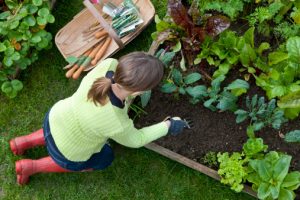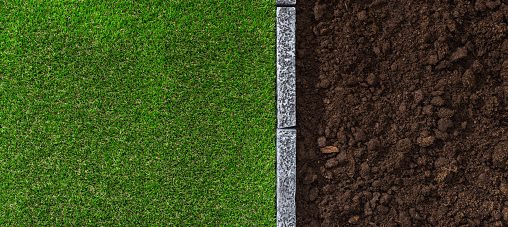If you’ve gone through the trouble of creating some wonderful garden beds, it’d be silly not to protect them from invasive and unwanted plants such as weeds and blades of grass sprouting up. Reducing the risk of having your beds taken over by other plants that have spread from your lawn can be as easy as creating garden borders which itself is no huge task.
Cutting garden borders not only helps to protect your precious beds, but also adds more style to the garden and can even make it seem more spacious. The crisp and sharp lines of well-cut borders can really give your garden that professional look, and if you decide to go with curved or round borders, it can have a ‘softening’ effect on the overall aesthetic.
Grab your reading glasses, and get comfortable, as we explain how to cut a garden border.
How to cut a garden border- planning
When planning your garden border, you have to decide on a few things. Firstly, is your border just going to be a trench to separate the lawn and your garden beds, or will you be planting flowers in the border itself?
The reason this is important is that it will affect the area you should cut your garden borders. If you’re planning to plant flowers and plants in the border, they’re going to need a decent amount of sunlight to grow, and so you should stay away from overly shaded spots.
Best edging shears
Once this is decided, the next thing is to make your mind up about the shape of your edges and border. Will you go contemporary style and keep to straight edges? Or will you prefer to have curved lines, arcing across your garden? If done right, both ways can look incredible. As a general rule though, smaller gardens look better with curved edges because it gives the illusion that there’s more space.
The last thing to plan is the width of your borders. They’re going to have to be fairly wide if you are intent on growing things in there, and anything under a metre is just going to make things more difficult for both you and your plants later.
Once you’ve made all your decisions, mark out the area you will cut away for your borders and grab your spade.
Removing the existing turf
It is most likely that you’re chosen spot for your borders is currently a part of your lawn, and so you will have to remove the grass from that area. The best way to do this, is to take your spade and cut a few centimetres down into the soil from your marked out border line and removing the grass one spadeful at a time, being careful not to overdo it.

If you’re going for a curved edge, you’re probably better off buying a tool that is specially designed for that rather than using an edging tool. It’s not impossible to make curved lines with a spade or edge cutter, it’s just harder.
Don’t dispose of this dug up lawn and soil as it can be put to one side and then left to be. Doing so will allow it to decompose and eventually turn into loamy growing medium to be used for other gardening projects later.
Weed out the problems
Just because you’ve removed the grass and a layer of soil from the area, it doesn’t mean that weeds have gone too, and the roots of the old weeds can often still be there just waiting to grow back. My advice is to wait a while after removing the soil to see what weeds pop back up. Once they have, use herbicides that are designed for perennial weeds to kill them off.
The best garden weeders
After applying the weed killer, you’ll have to wait the amount of time recommended by the manufacturers of the chemical before trying to plant something else there. This can be over a month, but it’s either that, or having to deal with weeds all the time in the future. And remember how to use a weedkiller safely.
Use compost or manure to improve the soil
Before planting in your borders, you really need to make sure the soil is at its best, and this is easily achieved by adding some organic matter like compost or manure to it. Use a garden fork to break up the top 5-6 inches of the soil, and then mix the organic material in there. You can take everything neat again afterwards.
Another option is to add mulch to the border. This has the dual effects of helping retain moisture, and at the same time; repressing weeds. It also gives the soil a distinct look due to the darker colour which can contrast beautifully with a lush, green, lawn.

All that’s left now is to grab a pair of shears and clip off any grass blades overhanging the edges to really define them, then choose your plants and flowers and get planting.
